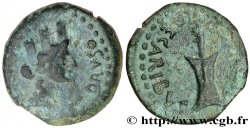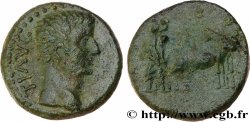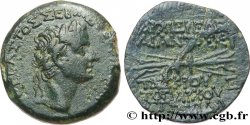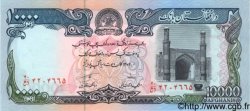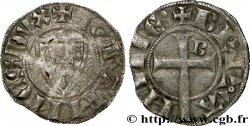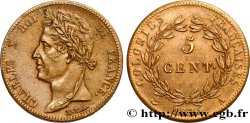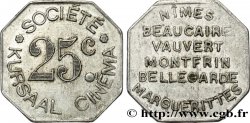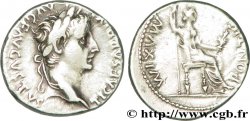v36_0365 - TIBERIO Denier
MONNAIES 36 (2008)
Precio de inicio : 225.00 €
Valoración : 350.00 €
Precio realizado : 235.00 €
Número de ofertas : 2
Oferta más alta : 248.00 €
Precio de inicio : 225.00 €
Valoración : 350.00 €
Precio realizado : 235.00 €
Número de ofertas : 2
Oferta más alta : 248.00 €
Tipo : Denier
Fecha: c. 15-37
Nombre del taller / ciudad: Gaule, Lyon
Metal: plata
Milésimas de pureza : 900 ‰
Diámetro: 18,5 mm
Eje de acuñación: 1 h.
Peso: 3,78 g.
Grado de rareza: R1
Emission: 5e
Comentarios sobre el estado de conservación:
Exemplaire sur un flan bien centré des deux côtés. Beau portrait. Revers de style fin, détaillé. A été nettoyé anciennement. Recouvert d’une fine patine avec des reflets dorés
N° en los catálogos de referencia :
C.16 (2 fr.) - RIC.26 - BMC/RE.48 - RSC.16 a - RCV.1763 (280$) - MRK.5 /4 (700€) - BN/R.34 - Giard/L1.153
Anverso
Titulatura del anverso: TI CAESAR DIVI - AVG F AVGVSTVS.
Descripción del anverso: Tête laurée de Tibère à droite (O*).
Traducción del anverso: “Tiberius Cæsar Divi Augusti Filius Augustus”, (Tibère César fils du divin Auguste, auguste).
Reverso
Titulatura del reverso: PONTIF - MAXIM.
Descripción del reverso: Pax (la Paix) ou Livie assise à droite sur un siège décoré, tenant une branche d'olivier de la main gauche et de la droite un long sceptre.
Traducción del reverso: “Pontifex Maximus”, (Grand pontife).
Comentario
Rubans de type 2. Comme pour le denier d'Auguste, cette pièce appartient à l'atelier impérial de Lyon et ce type de denier a circulé pendant pratiquement un siècle. Il se rencontre très souvent avec des monnaies gauloises de la phase terminale dans les fouilles archéologiques. C’est la monnaie romaine la plus courante en Gaule pour les Julio-Claudiens. La cinquième émission se caractérise par un socle représenté par une seule ligne et les pieds du siège sont ornés de fleurons ; les pieds de Livie reposent sur un tabouret ; au droit, les rubans de la couronne tombent en ondulations, mais roidement, le portrait reste réaliste, mais à tendance à devenir caricatural. Ce type est normalement frappé à partir de juillet 33 d’après les conclusions de Jean-Baptiste Giard.
Type 2 Ribbons. As with the Augustan denarius, this coin belongs to the imperial mint of Lyon and this type of denarius circulated for almost a century. It is very often found with Gallic coins from the final phase in archaeological excavations. It is the most common Roman coin in Gaul for the Julio-Claudians. The fifth issue is characterized by a base represented by a single line and the legs of the seat are decorated with fleurons; Livia's feet rest on a stool; on the obverse, the ribbons of the crown fall in waves, but stiffly, the portrait remains realistic, but tends to become caricatured. This type is normally struck from July 33 according to the findings of Jean-Baptiste Giard
Type 2 Ribbons. As with the Augustan denarius, this coin belongs to the imperial mint of Lyon and this type of denarius circulated for almost a century. It is very often found with Gallic coins from the final phase in archaeological excavations. It is the most common Roman coin in Gaul for the Julio-Claudians. The fifth issue is characterized by a base represented by a single line and the legs of the seat are decorated with fleurons; Livia's feet rest on a stool; on the obverse, the ribbons of the crown fall in waves, but stiffly, the portrait remains realistic, but tends to become caricatured. This type is normally struck from July 33 according to the findings of Jean-Baptiste Giard








 Informar de un error
Informar de un error Imprimir la página
Imprimir la página Comparte mi selección
Comparte mi selección Haz una pregunta
Haz una pregunta Consignar / vender
Consignar / vender
 Descriptivo
Descriptivo